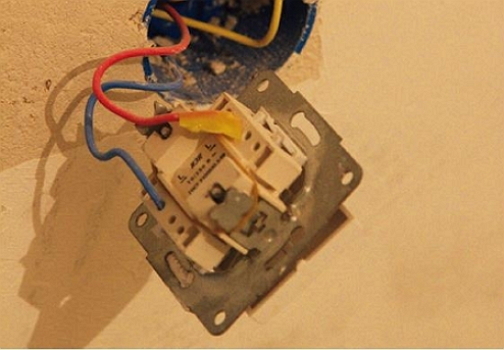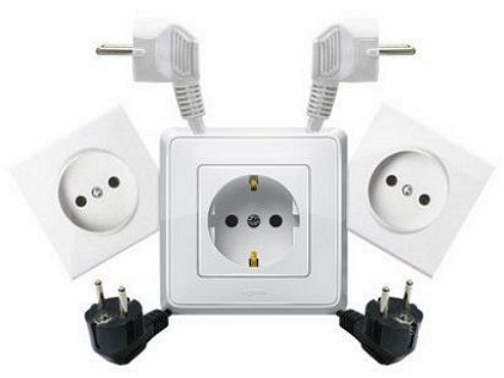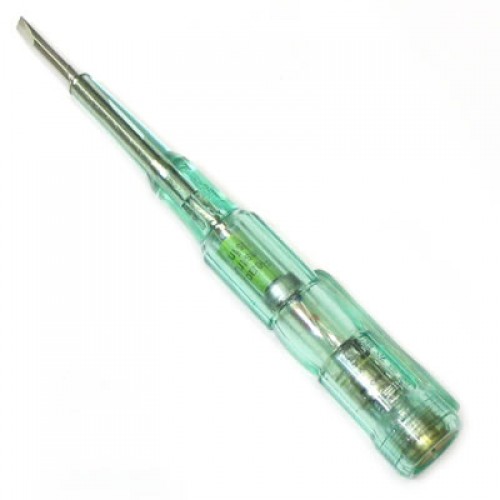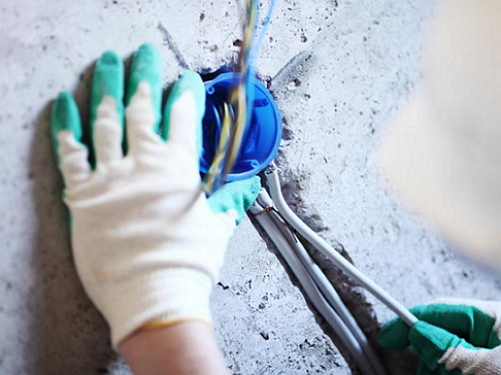The production of electrical work in the apartment is always associated with certain skills. However, the replacement or installation of an electrical outlet is sufficient even for housewives. For this, there is no need to take the courses "Yourself an electrician", everything is much simpler, like Ohm's law.
Content
Application and use of electrical outlets
In each apartment there is not only one, an electrical installation product, called a household outlet, which is used daily for a reliable contact electrical connection. Where do these two mysterious holes lead in plastic cases?

This is a contact electrical connection between a variety of household appliances and the mains electricity network. Therefore, the main task of the electrical outlet is a safe closure. The main technical characteristic of any power outlet in a working condition is the rated current. The value of the current value depends on the section of the current-carrying part of the socket and the contact area of the contacts.
Electrical outlet in section
Structurally the outlet consists of the following parts:
• input terminals
• Output contacts
• the insulator
• Enclosures.
Input terminals are located inside the outlet and connect the input wires coming from the wiring.
Output contacts create direct direct contact with the electrical plug with their current-carrying parts.
The dielectric part of the outlet is insulator. The insulator is attached current-carrying elements.
Housingthis is the part of the outlet on which the input terminals, output contacts and insulator are fixed. The enclosure is the installation place of work.
Types of sockets
Depending on the type of electrical wiring, the following types of outlets are distinguished in the apartment:
• for concealed wiring
• for open wiring.
Structurally, electrical outlets can be:
• single
• double
• with earthing
• two-phase
• three-phase
• with additional protection.
Want to find outlets and switches for the apartment with the help of Augmented Reality technology? Take advantage of the program welcar.ru. Computer technology augmented reality allows you to see the type of outlet on the site of the proposed installation in real time.
Basic parameters of sockets
Such an electrical installation product - the socket when used properly serves the apartment for a long time. However, in some cases, it may be necessary to replace the sockets. Among the reasons for which it is required to make a replacement, there may be damage, closure, a violation of the design.
How to install or replace an electrical outlet with your own hands? Before replacing the outlets it is necessary to determine its type and design. When choosing a socket, you must pay attention to the diameter of the inlet holes. The diameter of the holes in the sockets of domestic production is less than that of the euro analogues. Domestic power outlets are rated for a current flow of 6.3 A or 10 V. Euro outlets for the current value of 10 A or 16 A. The pins of domestic production have a diameter of 4 mm, and the euro is 4.8 mm, the intermediate length between the pins is also different. When replacing and installing the outlet, it is necessary to take this difference into account. The value of the rated current to which the socket is designed is indicated on its rear side.
How to install an electrical outlet
Reasons for which you need to make a replacement socket can be a lot:
• partial or full melting of the socket housing
• the outlet of the outlet from the wall (mounting place)
• a normal desire to replace old-fashioned outlets with euros.
Installation and replacement of the electrical outlet is carried out during the daytime. In the mode of natural illumination, possible errors during installation are excluded.
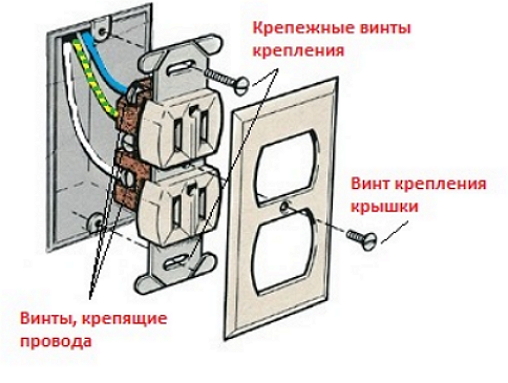
To install or replace the electrical outlet with your own hands, you need a suitable set of electrical tools:
• set of screwdrivers, including indicator, flat and cross
• Rubberized gloves for work
• wiring cutters
• a hammer
• chisel
• knife
The main stages of the installation or replacement of the outlet:
• completely disconnect the apartment
• check the presence of the mains voltage in the test screwdriver
• Unplug the old outlet
• check the condition of the wall outlet
• Replace the outlet
• Install the top cover
• turn on the power supply
• Check for current in the new outlet.
The apartment is de-energized for safe installation and replacement. To verify the absence or presence of voltage in the network use an indicator screwdriver, which with reliable accuracy will determine this fact.
Dismantling of the old outlet is recommended to be done carefully, not deteriorating the integrity of the wires. For dismantling, loosen the two screws of the spacer plates and unscrew the two fixing screws. At the stage of dismantling the outlet, the connection of the wires is loosened and the fasteners from the mains are released. The housing of the old outlet is removed from the mounting socket.
At the stage of replacement of the socket to the terminals we connect the wires and install the socket in the mounting box. On the sides of the housing of the electrical outlet there are always fastening elements that fix and fix its position in the mounting box. Therefore, tighten the two screws of the spacer plates and the two fixing screws.
Of course, the replacement or installation of the outlet depends on the material of the working surface for installation. For installation on concrete walls or plasterboard walls, certain rules or installation methods apply.
Professional installation of double electrical outlets for concrete walls is shown in the following video.
It is immediately evident that the professional worked: neatly, cleanly and reliably.
The main algorithm for replacing and installing an electrical outlet in a gypsum board wall is practically the same. For installation, you will need an additional installation fixture - a plastic pad.
Installation of an electrical outlet in a wall of plasterboard will help you to video.





